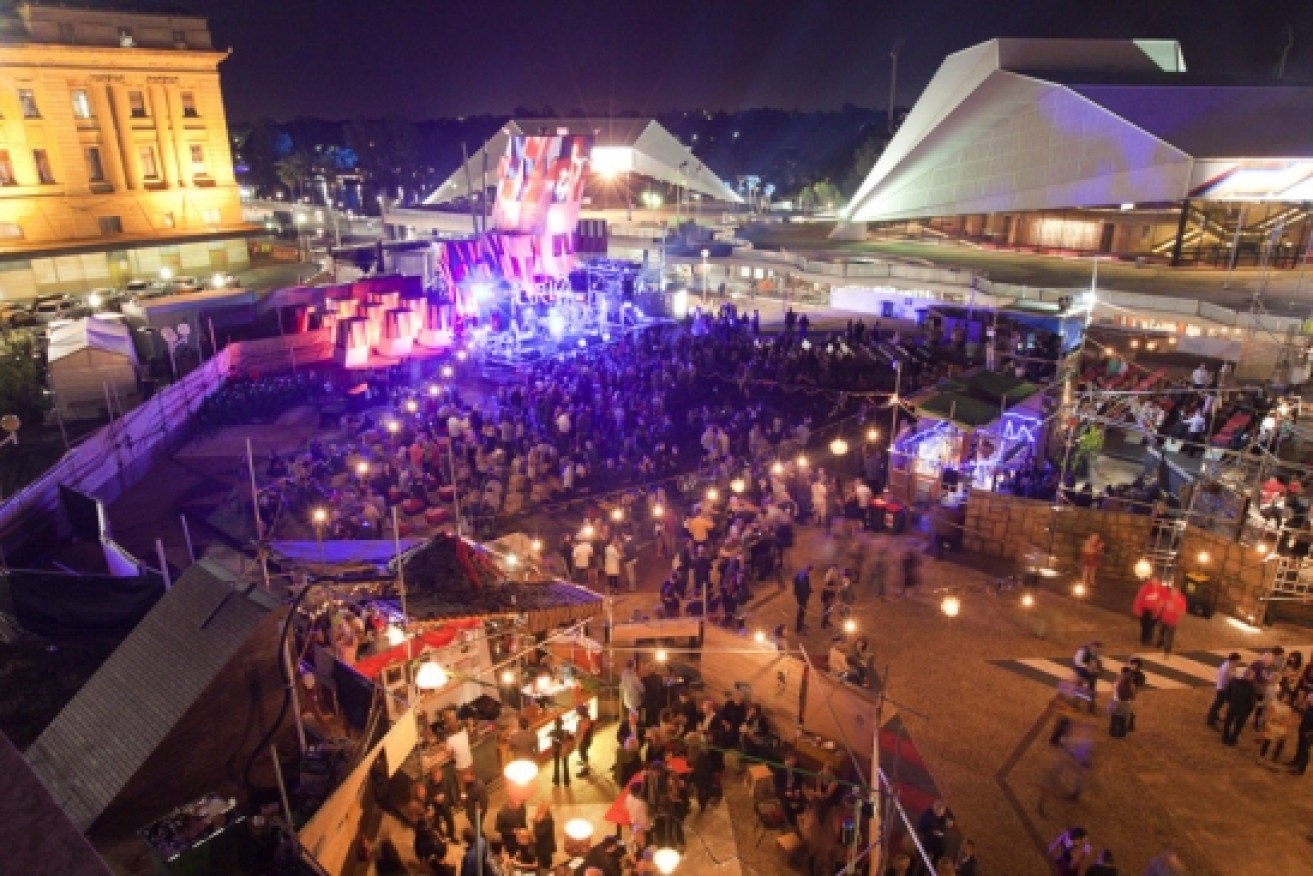SA arts: enough with the numbers

Crowds at the Festival Plaza during the Adelaide Festival.
Despite the modern political obsession with economic growth, not everything that is valuable in South Australia’s cultural sector can be measured by numbers.
In an interview on ABC radio a week ago, Sir Gus O’Donnell, Cabinet Secretary to three British Prime Ministers, discussed the problem of measuring growth with the GDP index. He talked about nations “becoming addicted to pushing it up” using any means necessary, by including in their figures (for example) income from prostitution and illicit drugs.
You get what you measure. But what exactly are you measuring? Clearly, GDP is not much of a guide to social progress if it includes the proceeds of organised crime.
A bumper year for the cultural sector is on the face of it a wonderful thing. Figures released to The Advertiser recently point to “surprisingly good” results for the arts. They indicate South Australia is the only state to increase its share of the cultural market during the year. The main story is Screen Australia data showing the SA film industry bringing in significantly increased revenue for the local economy.
But other sub-sectors have spread the love. More audiences for festivals; more ticket sales for theatre companies; more feet through the door of the Art Gallery; more grants for the SA Museum. More, more, more.
People working in the cultural sector are usually happy when their work does well in our user-pays economy (certainly, one of the authors, Julian Meyrick, was pleased when Neighbourhood Watch, a production he’d directed for the State Theatre, broke box office records).But even good numbers involve arts organisations in a game of Russian roulette.
What happens next year if the numbers are poor? What happens when they don’t reflect the quality of a cultural event? Just because a lot of people pay to see a film doesn’t make it any good. What about Aboriginal art? Do you like it? If you don’t, does that mean it has no value? And where do figures come from?
Audiences, like the arts themselves, don’t appear out of nowhere, but accrue over sometimes long periods of time. Do this year’s figures reflect this year’s culture, or are they the fruit of hard labour from years gone by?
In truth numbers say very little, good or bad, in themselves. What they provide is an opportunity to tell a story. Yet too often the story we choose to tell about culture is one of uninflected failure or success. So many events, so many patrons, so many awards. Like GDP, everything is tipped into a one-size-fits-all index of progress while the nuance and detail of cultural experience is lost. The arts are reduced to a number – not because numbers are always reductive, but because they are used in this reductive way.
Culture is part of the economy, but it is also an antidote to it.
The South Australian cultural sector clearly has a difficult road ahead, with a budget impasse between state and federal governments and attempts to save money by mass-merging local boards and governing organisations. The kinds of numbers reported in The Advertiser can’t be expected in future years. And perhaps they shouldn’t be.
The absolute growth of arts events is important but so are other things – sustainability, accessibility, merit and degree of civic ownership. The last is particularly hard to capture using quantitative measure, falling under what in the Whitlam era would have been called ‘quality of life’. Culture is something we consume, but is also something that critically shapes our broader environment. We define what culture is by paying a price for its individual units. But it also defines us, by shaping our minds and our collective values.
The relationship between Adelaide and the Adelaide Festival is not simple. It one sense Adelaide as a city ‘has’ the Festival. In another and important sense the Festival ‘has’ the city, influencing views of it at home and abroad.
Economic growth is a political obsession. Governments of all stripes seem unable to think or talk about anything else and everything, in this richest of countries, comes down to money. Numbers are a good proxy for financial wealth, so that money, political obsession and numbers run together in a mad dash forward to indeterminate but feverishly urgent expansionist goals.
Culture is part of the economy, but it is also an antidote to it, somewhere we go to reflect on our lives and/or to escape from them – to be cultural. This is an important function, and the cultural organisations listed by The Advertiser are a roll-call of specific contributors, not generic businesses. They are providers of particular kinds of experiences.
The question is: what story does Adelaide want to tell about its culture?
On the one hand, there is a stock narrative, a city like any other, with a cultural sector like any other, which in turn is a sector like any other. This is a ‘success’ story, but it tells us nothing about the history and complex personas of our state library, one of the oldest in Australia, or our gallery system, our state theatre or our museums.
On other, there is a tale of a unique cultural ecology, expressed in all sorts of strange and endearing ways by the cultural events and organisations that make it up – that put the ‘festival’ into the Festival State.
Isn’t it about time we started telling that story as well?
Professor Julian Meyrick and Dr Tully Barnett are from the School of Humanities and Creative Arts at Flinders University.
They are researchers in “Laboratory Adelaide”, a Flinders University’s cultural value project partnered by the State Library, the State Theatre and the Adelaide Festival.




